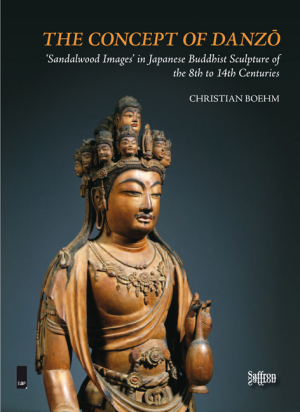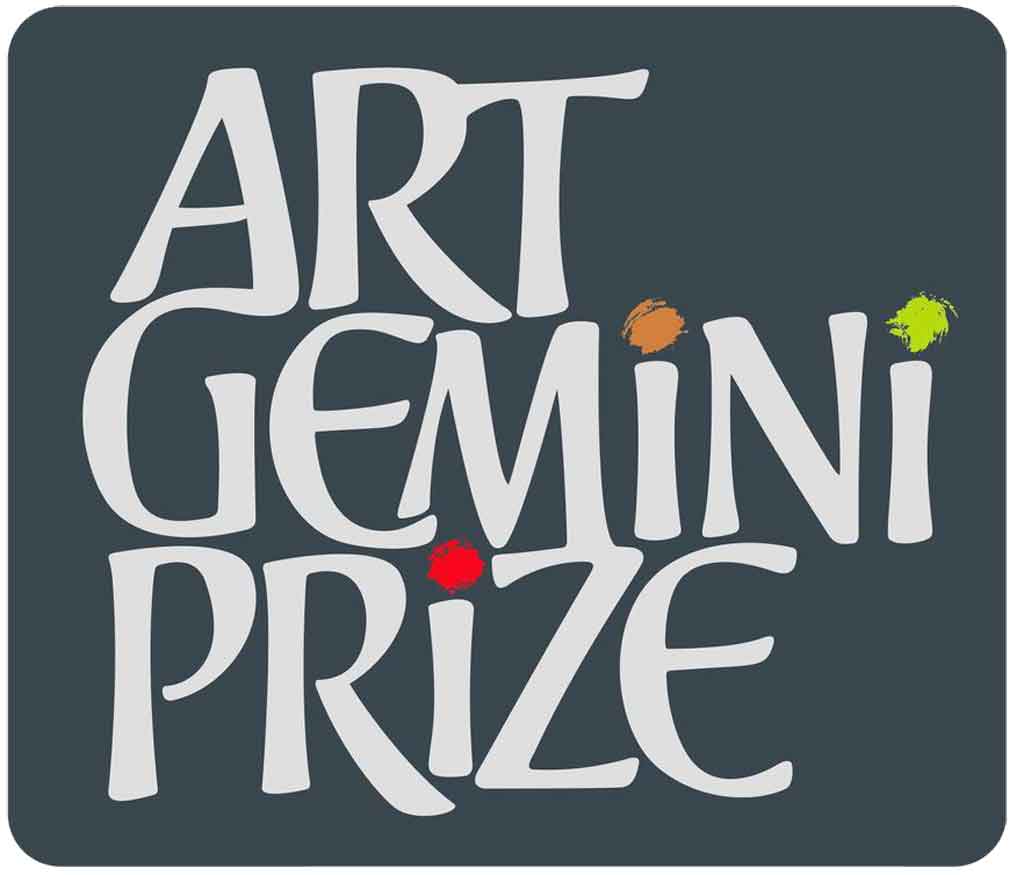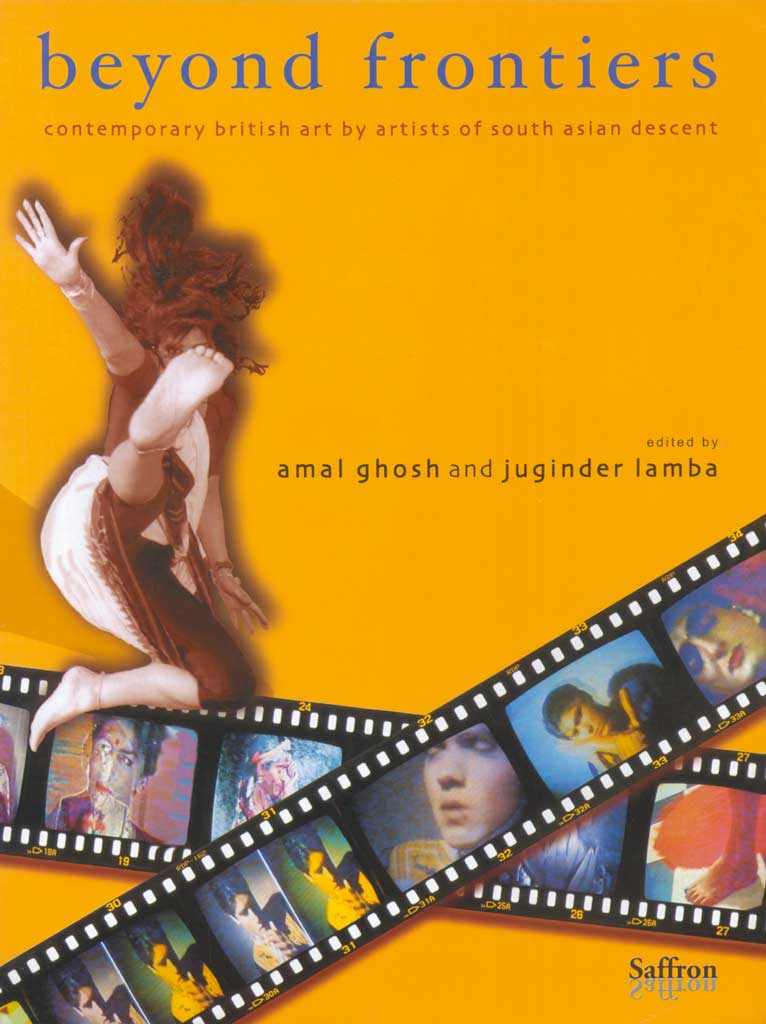Europe in India: Paintings, Drawings and Ivories from the British Museum
South Asian art from the 16th century onwards was influenced by European travellers–missionaries, adventurers and traders–with extraordinary results. Some Asian interpretations of European subject matter or styles are downright comic, others evocative of an evolving relationship between European powers and a region in great flux and decline
Sheila R Canby
By Sheila R Canby, [formerly] The British Museum
From Eastern Art Report print edition, Volume IV No 3
The title of the recent British Museum exhibition, Europe in India: Indian paintings and their European prototypes, was somewhat misleading. Not only were drawings, bookbindings, ivories, and a bronze lamp on show, but also the European prototypes from the 16th, 17th and 18th centuries are devilishly hard to find. The vast collections of the British Museum’s Prints and Drawings Department have been made with an eye to quality, which means that prints of the type sent to India in the 16th century are not as abundant as one might imagine. From reading various catalogues of Indian painting collections, I realise I am not alone in this quest; too often scholars have admitted that the prototypes for various Europeanising works are unknown.
Yet, even if the precise models are elusive, the categories into which Indian paintings based on European sources fall are distinct. The largest and earliest group consists of pictures of Christian subjects. A related early group depicts allegorical themes, though the prototypes can be either secular or religious. From the mid-17th century until the end of the 18th century European-influenced paintings from Delhi, Lucknow, Faizabad and Murshidabad reflect the broader exposure to a variety of European pictorial sources as well as to Europeans themselves. Finally, in 18th-century Udaipur a Dutch diplomatic mission inspired a whole genre of European-style painting. The ivories from Goa pose different art historical questions since they are stylistically faithful to Portuguese and Spanish sculptural models.
1. The Entry into Jerusalem, possibly from a Dastan-e Masih manuscript of Fr Jerome Xavier, Mughal, ca 1605, opaque water colours on paper, 14.6×7.2 cm.Copyright Trustees of the British Museum, 1965 7-24 05.
These groups tie in with historical events and suggest ways in which artists, especially those of the Mughal and Mewar schools, adapted foreign motifs and techniques to their own styles. An understanding of the means by which images were transmitted to India helps explain why certain categories of works were produced at certain times. In three articles published between 1965 and 1976 and various catalogue entries from the late 1970s and 1980s, Milo Beach discussed the European sources for paintings and drawings in European and American collections.[1] He also analysed the relevant paintings and borders of the Gulshan Album, compiled for Jahangir at the end of the first decade of the 17th century, and held in the Gulistan Palace Library in Tehran. To set the stage for his analysis, he has reviewed the history of the Portuguese, and specifically the Jesuits, in India which I will briefly repeat here.
After Vasco da Gama rounded the Horn of Africa in 1498, the Portuguese lost no time establishing themselves in forts and trading posts in the Persian Gulf and on the west coast of India. In 1510 Alfonso da Albuquerque took Goa from the Sultan of Bijapur and soon the Portuguese were trading from Surat and Diu in Gujarat as well. By 1542 members of the recently founded Society of Jesus (Jesuits) had come to Goa under the leadership of Francis Xavier to spearhead the Portuguese proselytising effort.
Although Akbar (r.1556-1605) must already have been aware of the Portuguese presence in India, the first mention of this is in an account of a meeting in Surat during his Gujarat campaign with a Portuguese group from Goa.[2] In 1576 Akbar invited Father Julian Pereira, the Vicar-General of Bengal, to Fatehpur Sikri. He arrived in 1578, followed in 1580 by three Jesuits from the College of St Paul in Goa.
From the mid-1570s Akbar had instituted weekly religious discussions in a specially built structure called the Ibadatkhaneh, or house of worship. Although originally only Islam had been discussed, by 1578 all the major religions of India, including Christianity, were involved. Thus, the arrival of the Jesuits in 1580 coincided with Akbar’s broad fascination with religion which culminated in the establishment in 1582 of the Din-Ilahi, a hybrid religion incorporating Islamic, Hindu and Christian beliefs. The announcement of the Din-Ilahi dashed Jesuit hopes for Akbar’s conversion to Christianity, so in 1583 they left Fatehpur Sikri and returned to Goa.
The first Jesuit missionaries may not have made a Christian of Akbar, but they certainly caused a sensation with their gifts to the emperor. These consisted of the eight-volume Polyglot Bible with illustrated frontispieces, printed in Antwerp by Christopher Plantin between 1568 and 1573 and of two paintings, one of Jesus Christ and the other of Mary. Antwerp and the works of its printmakers dominated the trade in prints with Mughal India from the 1580s until 1627, the end of the reign of Jahangir.
As for the paintings of Jesus and Mary, Akbar is reported to have treated them with reverence, holding them until his arms ached.[3]
As Milo Beach has demonstrated, even before Akbar’s encounters with the Portuguese in 1570s and 1580s his artists must have had some familiarity with European prints or paintings. In the Cleveland Tutinama, illustrated between ca. 1565-70, and in some pages of the Hamzanama, produced between about 1562 or earlier and 1577 paintings attributed to Basawan indicate more than a passing awareness of European-style drapery and foreshortening.[4]
Following a short-lived second Jesuit mission in 1591, the third Jesuit mission, which had more of an impact on both Mughals and Portuguese, arrived in Lahore in 1595 led by Fr Jerome Xavier. Akbar commissioned Jerome Xavier to translate the life of Christ into Persian as the Dastan-i Masih. This was completed in 1602 and several early 17th-century manuscripts of it are extant. A group of dispersed illustrations to the Dastan-i Masih or similar work [fig. 1] point up the problems of assigning prototypes. As standard iconographic motifs, such as the laying down of the robes before Christ and his mount, are absent from The entry into Jerusalem, some scholars have suggested that verbal descriptions rather than pictorial models of the life of Christ were supplied to the Mughal artists of these scenes.[5] Yet, the presence of a riderless ass next to Christ is attested in a woodcut by Virgil Solis (1514-62) after an original by Dürer (1471-1528). Likewise, the gesturing figures in the foreground may have parallels in Italian works of the 16th century.
Portuguese Jesuit missionaries were not the only or even the original Europeans to transmit prints to India. Vasco da Gama’s voyage was certainly as concerned with trade as with proselytism, and later 16th-century travellers from Portugal, England and Holland went to India primarily as traders.
The scant records of 16th- and early 17th-century shipments to Asia reveal that engravings of a variety of subjects were included. A Dutch ship which ran aground on the Nova Zemlya archipelago, in the Arctic, in 1596 on its way East contained multiples of about 150 different images after works by various 16th-century Dutch engravers, including Hendrick Goltzius, Jacques de Gheyn II, Hans Collaert, Abraham de Bruyn, and Carel van Mander.[6] Subjects range from biblical and classical themes to landscapes, costume and emblematic prints. Presumably cargoes such as this were being shipped to India and China throughout the second half of the 16th century for purely commercial reasons as evidence of European-inspired Mughal paintings indicates.
European prints and paintings of allegorical subjects provided a source for Mughal painters, but the iconographical meaning of the European prototype is often lost or obscured in the transfer to India. A woman seated in a European chair playing the lute [Figure 2] could derive from a depiction of Terpsichore; this figure depicted in an engraving by H Goltzius is compositionally similar to the Mughal lutanist. The connection of the Goltzius engraving to the source of the Mughal lutanist is somewhat complicated by the existence of several other early Mughal paintings of figures seated in European chairs holding a range of accoutrements, some of which transform them into Christian subjects. Conversely, some Mughal artists turned religious figures into allegorical ones as well as performing sex changes.
At face value the Mughal figure by the artist Mushfiq appears to be a Muse [Figure 3] who is reading while her outer robe takes on a life of its own. Although Mushfiq may have intended to portray a muse, his source may have been a picture of an angel or a saint such as St John from The Evangelists by Hans Sebald Beham (1500-50). Mushfiq has transformed the saint by excising one wing of the saint and draping the other. It is possible that Mughal artists were not in every case certain of the sex of the figures depicted in European prints, since men often have long hair, no beard, and long robes that resemble those of women.
In some cases Mughal artists used actual European prints or very close copies of them as the basis of enlarged paintings. The portrait of François Dauphin de France [fig. 4] after an engraving by Thomas de Leu demonstrates how Mughal artists combined outright imitation with adaptation. Although the dauphin died in 1539 and the work by de Leu dates to about 1600, the Mughal picture was probably produced in the second third of the 17th century. It has been substantially extended on all sides with angels in the clouds above and a lion and a lamb beside a pool below. The cherubim in clouds were a constant feature of European-influenced Mughal painting from the arrival of the Jesuits onward. In fact the motif appears in the Polyglot Bible. On the other hand, during the reigns of Jahangir and Shahjahan the lion and the lamb became an often-used symbol of peace-loving Mughal hegemony.
5. Landscape with Fantastic Scene(detail), attributed to Mir Kalan Khan, Lucknow, ca 1760, opaque water colours on paper, 18.1 x 26.1 cm. Copyright Trustees of the British Museum, 1920 9-17 015.
By the mid-18th century the presence of Europeans in India had increased dramatically and their own political power increased as that of the Mughal rulers declined. Nonetheless, at the provincial schools of Lucknow and Faizabad some gifted artists continued to work in a Europeanising mode. Mir Kalan Khan was an especially individualistic artist of these schools who was active in the 1760s and 1770s. In his Landscape with Fantastic Scenes [fig. 5] the fisherman and horseman spearing a crocodile entirely dominate the sea battle in the background and the landscape in the fore- and middle ground, leading to the conclusion that the artist combined motifs from several European sources. While the figure killing the crocodile may derive from an image of St George and the dragon, the sea battle could be based on a depiction of the Spanish Armada or an event closer in time to the period of the painting.
As the numbers of actual Europeans in India increased, so did the opportunity for Indian artists to portray them. A Reception on a Terrace [fig. 6] depicts a moment of genteel British life most likely in Lucknow, though such scenes would also have been commonplace in late 18th-century Calcutta. The British officers are dressed with sashes and medals in the style of the period as seen in portraits of Clive of India. Their swept-back hair recalls the style favoured by Lord Wellesley, later the Duke of Wellington. Although the folds of the ladies’ skirts have a sculptural quality found in earlier works based on European prototypes, this composition seems less likely to have been based on a pictorial model than on an actual event or posed tableau.
A group of 18th-century paintings from Udaipur reveals how a single historical meeting of Indians and Europeans could result in local artists taking a new direction. Andrew Topsfield has written an excellent article on the embassy of the Dutch East India Company officer Johan Josua Ketalaar which travelled to Udaipur in 1711-13.[7] Although much of his article concerns large-scale paintings of Ketalaar’s meeting with Maharana Sangram Singh, he also discusses how Ketalaar’s visit inaugurated a new genre of farangi or Frankish painting in Udaipur. In the inventory of gifts presented to the Maharana of Udaipur prints are not mentioned. Yet Udaipur ‘farangi style’ paintings from the 1720s onward such as that of Two Ladies [fig. 7] derive from French prints. Many prototypes remain to be found, but the prints on which Two Ladies is based have been identified as two French engravings by Robert Bonnart. One of these depicts the 24 Demoiselles de St Cyr, chosen to attend the exclusive French school of the same name and published as being in a European collection.[8] It must have returned from India to Europe, for it bears an Indian inscription below its French one. Topsfield reports by way of Milo Beach and Moti Chandra that pictures dispersed from the Udaipur royal collection in the 1950s included European prints.[9]
A final group of Indian objects which exhibit strong European influence includes ivories made in Goa for its Christian population. The pieces in the British Museum collection date from the 17th and 18th century and reflect the prevailing style of Portuguese rococo which is also found in the churches of Goa. In fact, the painted and gilded wood sculptures set in niches in the grand and ornate retables, or altars, of Goan churches appear to have inspired the ivory figures. Ornate crucifixes with smaller figures of the Virgin Mary, St John and Mary Magdalene were presumably made for individual worshippers. Thus, ivories such as Mary Magdalene [fig. 8] would have been for personal rather than church use. Certain poses and figures were produced in abundance so that even today many copies of Christ the Good Shepherd, to name only one, are to be found in European collections. The use of polychromy on ivories simply followed that on wooden sculptures, but a few 17th-century pieces retain their rather lurid colours. The workmanship of Goan ivories ranges in quality from crude to very competent with few of the misunderstandings or distortions of European models found in the paintings.
As with the Mughal paintings based on Christian scenes, the Goan ivories maintain a fairly high level of fidelity to the iconography. Yet, for the painters working for Mughal patrons in the 16th and 17th centuries, the need for producing iconographically correct compositions was exceeded by the challenge of reproducing the techniques of European painting such as modelling, foreshortening, sfumato, and one-point perspective. Having copied the engravings of Solis and Beham, they internalised the lessons of their art. Although some compositions were taken over wholesale, most often motifs or figures were excerpted. This makes the task of finding prototypes more difficult, but it reminds us of the basic originality of the Mughal school and its ability to synthesize a range of styles. In later schools, such as Udaipur, exoticism comes into play. As long as actual foreigners were rare and novel, local artists produced delightful portraits of them and incorporated them into a variety of fanciful compositions. However, as Topsfield points out, once the English became an ever-present fact of life in the 19th century, the whimsical farangi genre expired.
Notes
- Milo Cleveland Beach, The Gulshan Album and its European Sources in theBulletin of the Museum of Fine Arts, Boston. no. 332 (1965), pp62 ff.; The Mughal Painter Kesu Das in the Archives of Asian Art, Vol. XXX (1976-77), pp34 ff.; The Grand Mogul: Imperial Painting in India: 1600-1660 (Williamstown, MA: 1978);The Imperial Image: Paintings for the Mughal Court (Washington DC 1981).
- Abu’l Fazl Allami, Akbar-nama, trans. H. Beveridge (Delhi: 1989 reprints of 1902-39 editions), Vol III, p37.
- Sir Edward Maclagan, The Jesuits and the Great Mogul (New York; 1972). p228, quoting a letter of Fr Xavier of August 20, 1595.
- Milo Cleveland Beach, A European Source for Early Mughal Painting in Oriental Art, vol. XXII (1976), pp180-188. John Seyller, A Dated Hamzanama Illustration in Artibus Asiaein LIII, 3/4 (1993), pp503-5, has convincingly revised the dating of the manuscript to 1562-77.
- Robert Skelton suggested this in a verbal communication, Indian Art Circle meeting, London, April 1995.
- J Braat, J P Filedt Kok, J H Hofenk de Graaff, and P Poldervaart, Restauratie, conservatie en onderzoek van de op Nova Zembla gevonden zestiende-eeuwse prenten in the Bulletin van het Rijksmuseum, Vol. 28 (1980), pp43 ff.
- Andrew Topsfield, Ketalaar’s Embassy and the Farangi Theme in the Art of the Udaipur in Oriental Art, Vol. XXX (1984), pp350 ff.
- Felix zu Lowenstein S J, Christliche Bilder in Altindischer Malerei (Munster: 1958), fig6.
- Topsfield, op. cit. p366, n 59.
[When this was written] Dr Sheila R Canby [was] Assistant Keeper in charge of Islamic Art and Antiquities at the British Museum. Before joining the BM in October 1991, she worked at The Brooklyn Museum, New York, and the Los Angeles County Museum of Art. Her publications include Persian Painting, 1993, and The Rebellious Reformer: The Drawings and Paintings of Riza-yi Abbasi of Isfahan, Azimuth Editions, London 1996.









